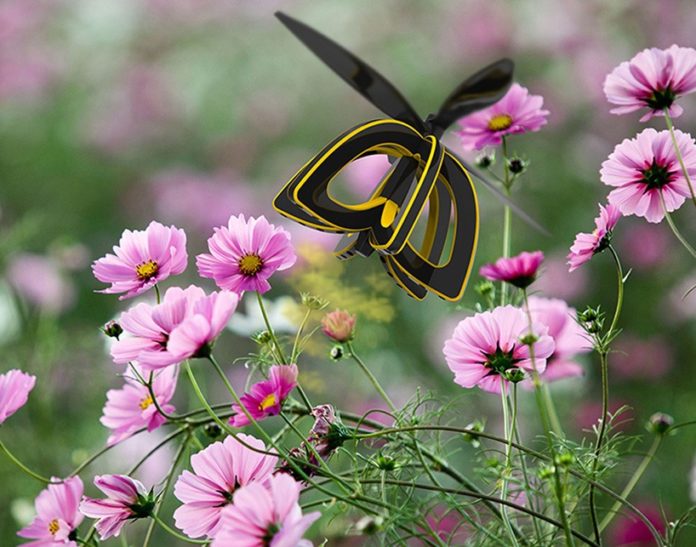Anna Haldewang turned a college project into an innovative device that spotlights the plight of the shrinking honey bee population and has gained significant media buzz.
So much attention, in fact, her distinctive black-and-yellow robotic device pops up prominently in Google image search results for the words “bees, drones and robotics.”
A Syracuse native who grew up on Dewart Lake, Haldewang graduated from Culver Academies and then enrolled at Savannah College of Art and Design in Georgia with intentions of studying fashion design. Within a year, though, she switched to industrial design.
Known as Plan Bee, the device is the size of a hand and the result of a challenge from a professor in an entry-level design class at Savannah.
She and the other students were tasked with creating a self-sustainable object that stimulates the growth of plants.
While researching the project, she was stunned to learn about the plummeting population of honeybees, which are crucial in the pollination of many plants.
She was the only student to focus their project on bees. While there are many miniature robotic bees, she said she is not aware of anything like the one she’s developed.
The drone mimics the process of how bees pollinate flowers and crops by transferring pollen from one flower to another. The device sucks in pollen from a plant and expels it onto other flowers to enable cross-pollination.
“Mine’s unique in that the small vacuums inside that suck up the pollen use very little energy,” she said.
Haldewang considered about 50 variations before settling on the final design.
Each of its sections – or legs – has small holes underneath that allow the device to suck up pollen with the use of miniature vacuums while Plan Bee hovers over the flower.
The pollen is stored in the body before being transported and expelled for cross-pollination with another flower.
An ultra-violet camera helps locate where to place the pollen.
The propellers are angled in a way to help push air through the chambers and direct the pollen toward its targeted area.
She envisions two purposes for Plan Bee.
She views it as an educational product that can spread awareness about a bee’s role in the food system.
“I have no plans on taking over the bee population at all,” she said. “This is designed so that when you’re looking out your window, you’re able to see that drone at work and you’re able to realize how much bees mean to us and how much we need them in our everyday life.”
The other role could extend to indoor farming involving hydroponics in enclosed environments that lack bees.
“That’s where Plan Bee could step in and help speed up that process in cross pollination in hydroponics,” she said.
She submitted her project to the International Design Awards and won a silver in the Environmental Design Preservation category.
Others also took an interest.
Last February, CNN sought an interview and did a segment on Plan Bee. Since then, Haldewang said more than 200 stories have popped up about the device.
“It’s received great news. I’m very thankful for how on-board everyone has been with it,” she said.
She wants to see the project further develop and thinks it could come to fruition in about two years.
Companies have reached out to her about the concept.
“It’s in the very beginning stages. I really need investors and engineers and all that for Plan Bee to really come to life,” she said.
Meanwhile, she expects to graduate this spring and is already looking for a job.
She’s had a few interviews already and hopes to find a career in the yacht design industry but will consider other industrial design companies as well, she said.





